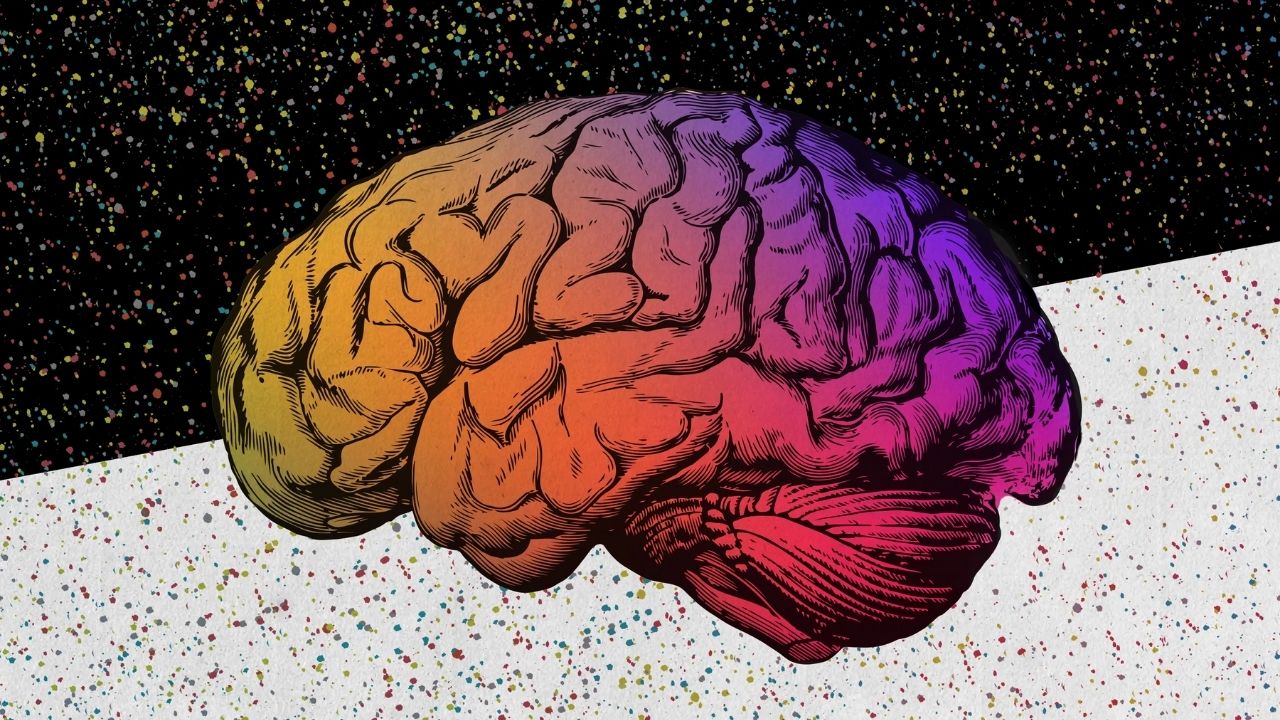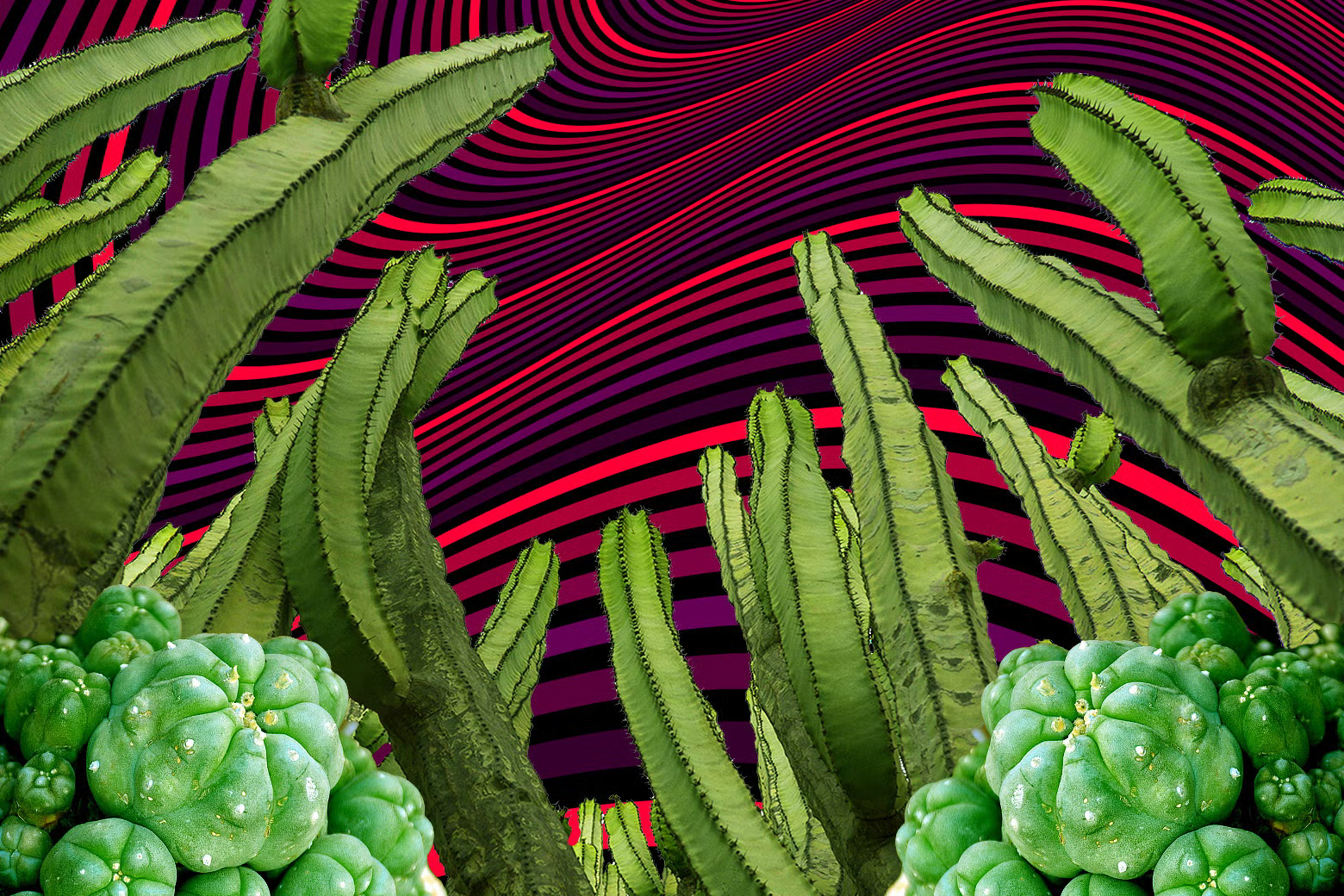By Gabriel García August 30, 2023
Mescaline is a psychedelic substance found in some cacti, such as peyote and San Pedro, and has been used since ancient times by various indigenous cultures for religious, ritual and therapeutic purposes. But how does mescaline act in the human brain and what effects does it produce? What potential does this molecule have for the treatment of some mental disorders? In this article we will try to answer these questions based on the available scientific evidence.
Mescaline belongs to the phenylethylamine group, a family of chemical compounds that also includes neurotransmitters such as noradrenaline and adrenaline, and other psychoactive substances such as amphetamine and MDMA. The structure of mescaline consists of a benzene ring with three methoxy groups in positions 3, 4 and 5, and an aliphatic side chain with an amino group. This structure gives it a high affinity for the serotonin 5-HT receptors in the brain, especially the 5-HT2A and 5-HT2C subtypes, which are involved in the regulation of perception, mood, cognition and behavior.
By binding to these receptors, mescaline causes an excitation of neurons in the frontal lobe, prefrontal cortex and other brain areas related to sensory, emotional and cognitive information processing. This results in altered consciousness in the form of visual, auditory, tactile and synesthetic hallucinations, distortions of space and time, changes in the sense of self and the world, intensified emotions and memories, and mystical or spiritual experiences. These effects can last from 6 to 12 hours, depending on the dose ingested, individual metabolism and environmental context.

Mescaline not only has an impact on the serotonergic system, but also on other neurotransmitter systems such as the dopaminergic, noradrenergic and glutamatergic systems. These systems are involved in functions such as motivation, reward, learning, memory and neuronal plasticity. By interacting with these systems, mescaline could have beneficial effects in the treatment of some mental disorders such as depression, anxiety, post-traumatic stress disorder, addictions and psychosis.
In fact, there are several psychiatric studies that have explored the therapeutic potential of mescaline for these purposes. For example, a 1965 study of alcoholic patients found that a single dose of mescaline induced a significant reduction in alcohol consumption during the six months following treatment. Another 2018 study of patients with treatment-resistant depression found that a single dose of mescaline produced sustained clinical improvement over four weeks. Likewise, a 2020 study of patients with obsessive-compulsive disorder found that a single dose of mescaline decreased obsessive-compulsive symptoms for two weeks.
These results suggest that mescaline could have an antidepressant, anxiolytic and antipsychotic effect by modulating altered neural circuits in these disorders. In addition, mescaline could facilitate psychological processes such as introspection, catharsis, cognitive restructuring and emotional integration, which are essential for therapeutic change. However, these studies are limited in number, sample size, methodological design, and long-term follow-up, so further research is required to confirm the efficacy and safety of mescaline as a psychiatric treatment.

One source of useful and rigorous information on psychedelics is Argonowta’s Psychonaut’s Guides, which offer practical and scientific advice on how to prepare for, experience and benefit from psychedelic trips. These guides address topics such as dosage, set and setting, integration or legal and health precautions. If you want to know more about the fascinating world of psychedelics, we recommend that you consult these guides and explore your mind responsibly and respectfully.
The Psychonaut’s Guides from Argonowta Publishing is a collection of books that explain in a rigorous and accessible way the scientific, historical, cultural and experiential aspects of psychedelic substances. These guides offer updated and contrasted information on the therapeutic and neuroscientific applications of psilocybin, LSD, DMT and MDMA, as well as practical advice on how to prepare, carry out and take advantage of psychedelic experiences. The Psychonaut’s Guides are a must-have reference for anyone interested in learning about the psychedelic renaissance that is transforming mental health and changing lives.





